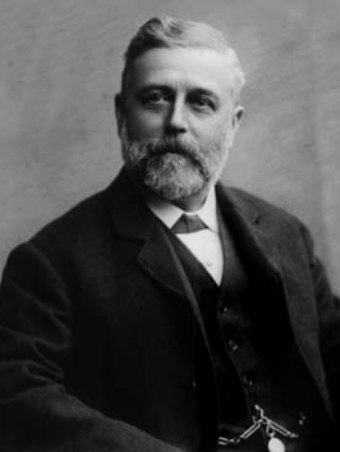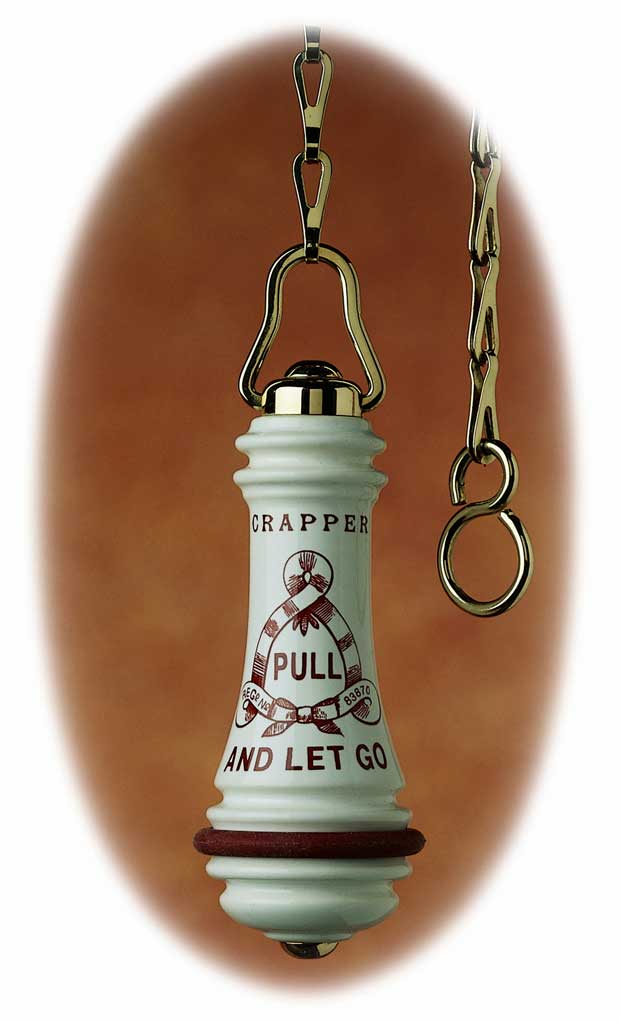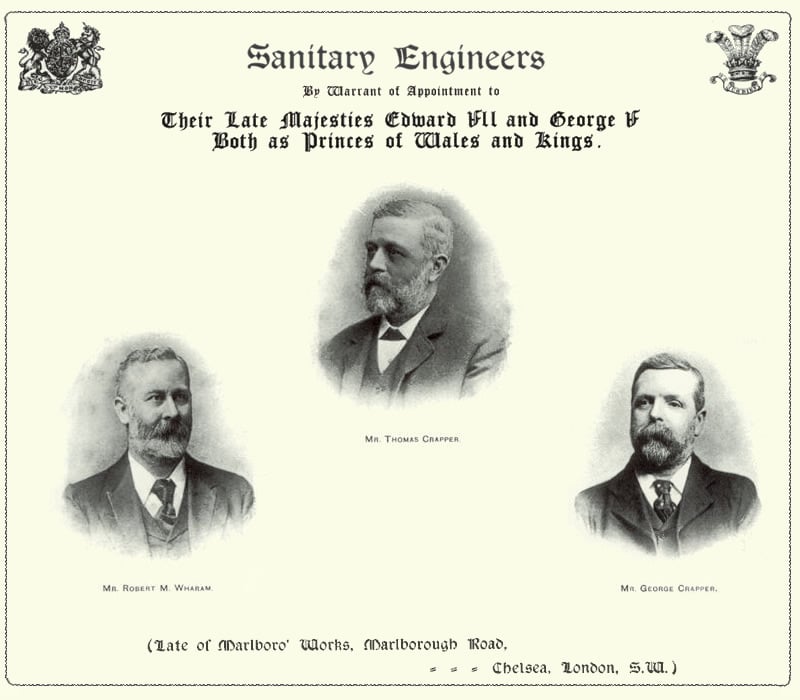Today in business we’re told that it’s all about brand awareness. Get your brand name out there, those gurus from the business blogs and marketing seminars tell us, and the customers will beat a path to your door.
BRAND RECOGNITION
Some brand names become associated with particular activities – hoovering and googling are two that spring immediately to mind in this respect – whilst others are just, well, ubiquitous in their outreach – Coke, McDonald’s, Heinz, Virgin, Jack the Ripper(!) – the list just goes on and on.

But, there is one company name that has, over the years, caused a great deal of mirth, and which, if the truth be known, instantly causes a flutter of whimsical recognition upon hearing it – and that name is Thomas Crapper & Co.
Now, be honest, the moment you heard that name you knew instantly what said company manufactured, didn’t you?
It may even have afforded you a little snigger – oh, come on now, you have to admit it is one of those names that is funny! If names were natural comedians Crapper would be up there with the best and most legendary of them.
IT DOESN’T MEAN THAT
And yet, chances are, you were mistaken as to its connotations.
You see, the word ‘crap’ is a word of ancient origin – it simply means rubbish or chaff – and is in no way related to the Chelsea plumber, Thomas Crapper, whose ingenuity in the field of water closet activities made the ritual of visiting said waste disposal device an altogether more pleasant and efficient experience.
In fact, the name “Crapper” was, apparently, derived from the name “Cropper” and, as with so many surnames, it originated as a means of denoting a person’s trade – in this case somebody who brings in the crops.
The word was taken out to America by the early English settlers, where it remained in common usage – whilst, in England, its usage gradually died out and thus, by the time of Thomas Crapper’s birth in 1836, he was able to enjoy a childhood free from the name-calling that would, no doubt, befall him were he to be born into the modern age or, for that matter, into 19th Century American society.
YOUNG THOMAS CRAPPER HEADS FOR LONDON
Quite when young Thomas packed his bags and decamped to London from his birthplace in Yorkshire is uncertain.
One account has him walking the 165 miles to the Capital aged just twelve – other accounts say 14 – where he began his climb up the slippery pipe of Victorian plumbing by getting himself apprenticed to a Master Plumber based in Robert Street, Chelsea.
In 1861 he had mastered the trade with which his name was destined to become synonymous and he felt confident enough to set up business on his own account and, more importantly as far as posterity is concerned – in his own name.
CRAPPER OF CHELSEA
His business endeavour began in Robert Street and, evidently, proved so successful that he was able to move to larger premises on nearby Marlborough Road – where he was able to enjoy the latest in communicative technology by acquiring the telegram address “CRAPPER, CHELSEA.”

A GOOD TIME TO SET UP AS A PLUMBER
As it transpired, he couldn’t have chosen a more, so to speak, convenient time to set up as a Sanitary Engineer – a designation that sounds so much better than plumber don’t you think?
Following the so-called “Great Stink” of 1858, when an extremely hot and dry summer had caused London’s, at the time, main sewer – the River Thames – to dry up, Sir Joseph Bazalgette was hard at work on a new state of the art sewer system that would, ultimately, make the Capital a far more pleasant place to live than at almost any prior period in its long, eventful history.
BUSINESS WAS BOOMING
With households connecting en mass to this new system, plumbers were soon straining hard to keep up with the demand for their services and Thomas and his merry band of employees found themselves constantly on the go.
THE METROPOLIS WATER ACT
However, the big break for Crapper and Co. came in 1871, the year that the government of the day passed the Metropolis Water Act – which unified the various water companies that, till then, had divided the supply of water and the disposal of waste between them – and made them the responsibility of just one municipal body.
WATER WAS BEING WASTED
One of the things that the new body set itself the task of tackling was the dreadful waste of water that was occurring across the Capital, with regards to the flushing toilets that had been gaining in popularity since their introduction to Londoners at the Great Exhibition of 1851.
The operation of flushing the toilet was simplicity itself. Each toilet had a cistern that had a valve at the outlet. Once you had done the required business, you pulled the chain, which lifted the valve and – whoosh – the water was released.
However, it had become fashionable for households to simply tie the chain in such a way as to keep the valve constantly open so that the water ran continuously.
Some people did so because they simply couldn’t be bothered to make the effort of flushing the chain, whilst others felt it was altogether more pleasant and hygienic to have a constant flow of clean, fresh water babbling through their system.
Either way, the new body, charged with ensuring that London had a sustainable and efficient water supply system, became somewhat concerned that, if this habit wasn’t curbed, demand would far exceed supply and the reservoirs might well soon dry up.
And one of those who answered the call to tackle this hugely important issue was Thomas Crapper.
NINE PATENTS APPLIED FOR
Between 1881 and 1896 Crapper applied for, and was granted, nine patents that helped improve drains, water closets, manhole covers and pipe joints and his work began appearing all over London and can still be seen to this day. Indeed, a magnificent example of one of his manhole covers can still be viewed in the cloister area of Westminster Abbey.
BUT HE DIDN’T INVENT THE FLUSHING TOILET
However, he did not, as is often claimed, actually invent the flushing WC as we know it today. In fact, it is safe to say, the modern flushing toilet that we are so familiar with and appreciate evolved over a period of several centuries and was, therefore, not the work of a single inventor.

What he did do, however, was improve the way in which we use the water closet by popularising such notable innovations as the floating ballcock, the pull and let go toilet chain, and by refining – although not, as he was prone to imply, actually inventing – the siphon flush with his “Crapper’s Valveless Water Waste Preventer.”
Sadly, despite the fact that it remains one of the least wasteful methods of flushing a toilet through, this splendid device has, in recent years, fallen from favour, its place being usurped by the more leak-prone method of waste disposal – the dual-flush valve.
WE WASTE MASSIVE AMOUNTS OF PRECIOUS WATER
Unbeknown to many of us, today we waste a huge amount of water because we have abandoned the siphon flush in favour of dual-flush valves, which look great – until, that is, they become faulty, at which point we start, quite literally, flushing valuable drinking water down the pan.
Indeed, next time you press that little button atop your posh toilet, have a quick watch of this Youtube video which exposes (if you will pardon the expression) the underbelly of the problems posed by the dual flush WC and which extols the virtues of the siphon flush as advocated by Mr Thomas Crapper esq.
A MARKETING GENIUS
However, the area of business in which Thomas Crapper excelled, and in which he left the competition standing in the stalls, was in the marketing of his devices.
Today, when that dreaded time comes around when the tiling, fittings and toilet bowl start looking a little lack-lustre, we take it for granted that we can just traipse over to the local showroom and peruse possible replacements to our heart’s content.
But, to prudish Victorians, discussions of a water closet nature were decidedly off-limits in polite conversation. You might mention your preference discreetly to an architect – or a plumber could you bring yourself to actually meet him face to face – but the actual selection process would be done behind closed doors out of sight of the prying eyes of the neighbours, whom you most certainly didn’t want knowing your business.
THE SALESMAN CALLED
A furtive salesman would arrive at your door armed with a nondescript brown leather case which would be filled with miniature toilets, wash basins and baths, discreetly tucked inside. You would usher him quickly inside, draw the curtains, and then you would select your preferred utensils with as little eye contact as possible. Having made your choices, you would cough and then quickly make your excuses and leave the room. Oh, alright then, that last bit is creative licence, but you get the drift!
The downside to this was that you had no idea what the full sized, finished version would look like.
THE MODERN BATHROOM SHOWROOM IS BORN
Crapper crumpled up this established blueprint for interior design and challenged po-faced 19th century householders to confront their bathroom requirements head on – or should that be bottom on – by brazenly opening a showroom at his Marlboro’ Works. Large street-facing windows enabled passers-by to look in and admire a vast array of bathroom fixtures and fittings in all their full-sized, uncensored, glory.
Initially, such was the impact of this major innovation on polite sensibilities, that ladies of a genteel disposition were reputed to have fainted on catching sight of the gleaming white toilet bowls squatting unashamedly in Mr Crapper’s showroom window, and many a Victorian matron would, no doubt, have emerged from her encounter with the window displays with a decided flush to her cheeks.
ROYALTY SPENDS MORE THAN A PENNY
However, little by little, the innovation caught on and, come the 1880’s, Crapper and Co. had established themselves as the go to company for people to go to when they needed something to go on – so much so that they were able to snare the big one, so to speak, by being approached by no less a personage than the Prince of Wales (later King Edward V11), who asked the company to provide for the plumbing requirements of the newly purchased Sandringham House in Norfolk.
The thirty lavatories, resplendent with cedar wood seats and enclosures, that Crapper supplied so delighted the Monarch-in-waiting that the Marlboro’ Works was awarded the first of several Royal Warrants.
Of course, catering “By Appointment” to the sanitary needs of the Royal Family ensured that social climbing households just had to follow suit and this, in turn, established a steady trickle of demand and, from that point on, Thomas Crapper never looked back.

KINGS AND QUEENS SAT BENEATH HIM!
Oh yes, dear reader, Thomas Crapper may not have actually walked with Kings – but Kings, Queens, Princes and Princesses, most certainly, sat happily and comfortably beneath his name. Indeed, such was his contribution to the field of sanitary engineering and effluent disposal that he must have ended his days flushed with pride at the dizzy heights – or to be more precise depths – to which his ingenuity had taken him.
He died in 1910 and is buried in Beckenham Cemetery, South London. where his final resting place can still be visited.
And the company, Thomas Crapper and Co. to which he gave his name is still going strong in Stratford-Upon-Avon in the more than capable hands of Simon Kirby, a historian and collector of antique bathroom fittings and his old friend Warrick Knott.
BUT WHY “THE CRAPPER”?
So, how did it come to pass that Thomas Crapper’s name became synonymous with the act of visiting the WC, rather than with the device itself? Well, we can thank the descendants of those aforementioned American settlers who, you may recall, took the ancient word for rubbish or chaff with them to the New World and kept its usage alive.

During the First World War, American servicemen, stationed in London, were amazed and amused to see the name of Crapper emblazoned on toilet bowls and cisterns across the Capital.
To the total bemusement of their English cousins, they began to refer to the whole device as “the Crapper,” a designation which they took back to America with them when the War had finished.
Its association with waste were quickly apparent to anyone who heard the toilet referred to as “The Crapper”, and soon it had caught on all across the United States from whence it was returned to the land of Thomas Crapper’s birth. Here, as had already happened in the US, his surname was soon in popular usage as a descriptive of the act of defecation and the rest, as they say, is history.
IT’S ALL IN THE NAME
So, if you’re sitting there, reading this on the toilet – hey, I don’t know the reading habits of the readership! – spare a thought for the man from Yorkshire who was, not only a pioneering figure in the field of Victorian sanitation but whose name has the ability to instantly bring to mind the activity that you might currently be partaking in and thus is guaranteed a glorious immortality that will ensure he will be remembered long after you have pulled the chain. Oh, and don’t forget to wash your hands.
The images in this article have been kindly provided by Simon Kirby of Thomas Crapper and Co.
